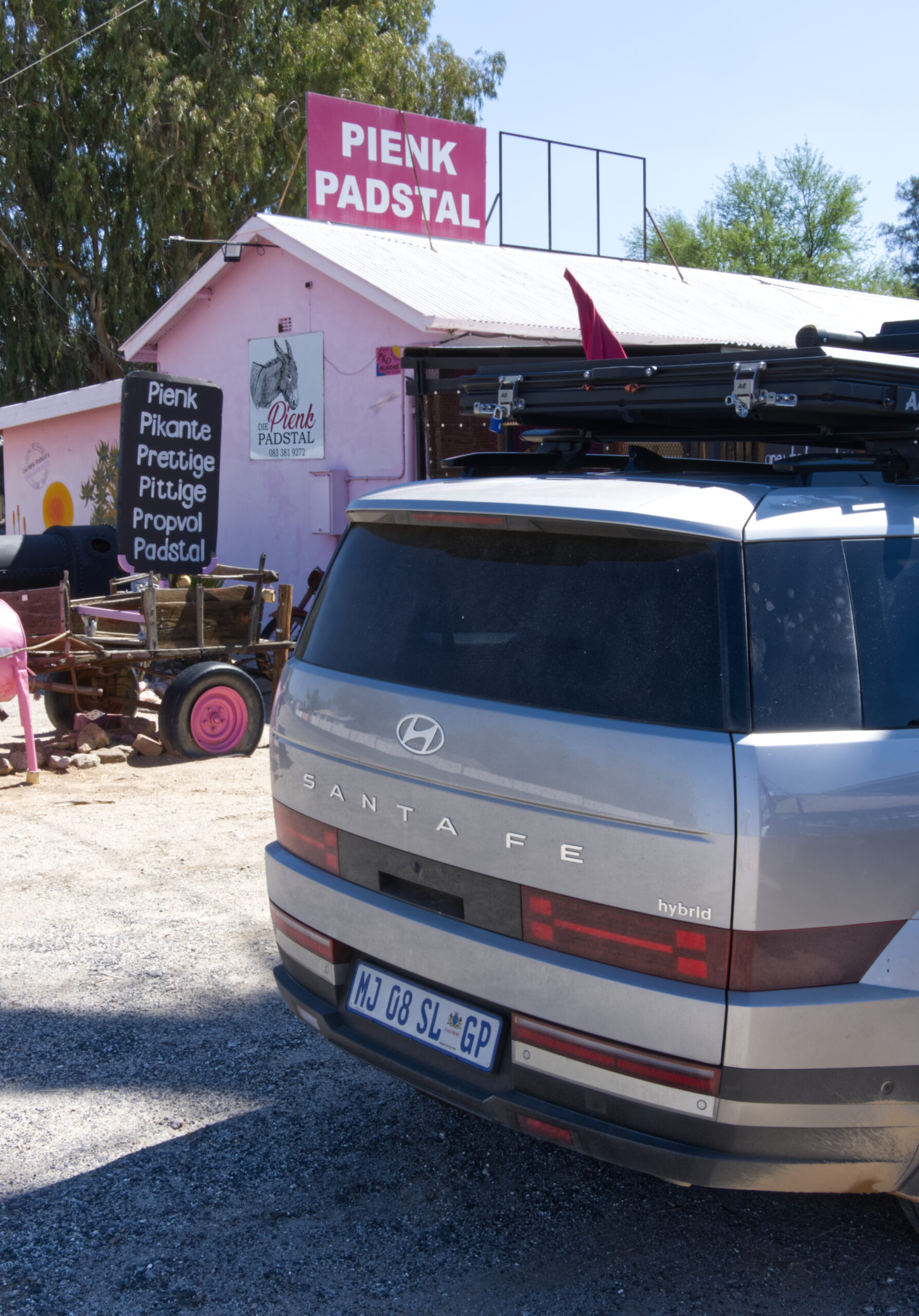The boxy silhouette of the 2025 Hyundai Santa Fe Hybrid creates an unusual profile against the barren landscape of the West Coast. To the purist, this might seem an unlikely overlanding candidate. But to Deon Sonnekus, a retired automotive communications professional with decades of experience, it represented a different kind of adventure. One that blurred the lines between luxury family hauler and capable expedition vehicle.
“I call myself a freelance Public and Media Relations Specialist, and Events Manager,” Deon explains, reflecting on a career that spanned journalism, Volvo Cars SA, and thirteen years as General Manager of Corporate Communications at Hyundai Automotive SA. “However, the nasty thing called retirement happened to me at the end of 2025, and now I am a free agent looking for work, and using the skills I have gathered in my life.”
It was with this experienced eye that Deon would embark on a journey that would test both the capabilities of Hyundai’s redesigned Santa Fe and the practicality of pairing it with the ultimate lightweight expedition equipment.
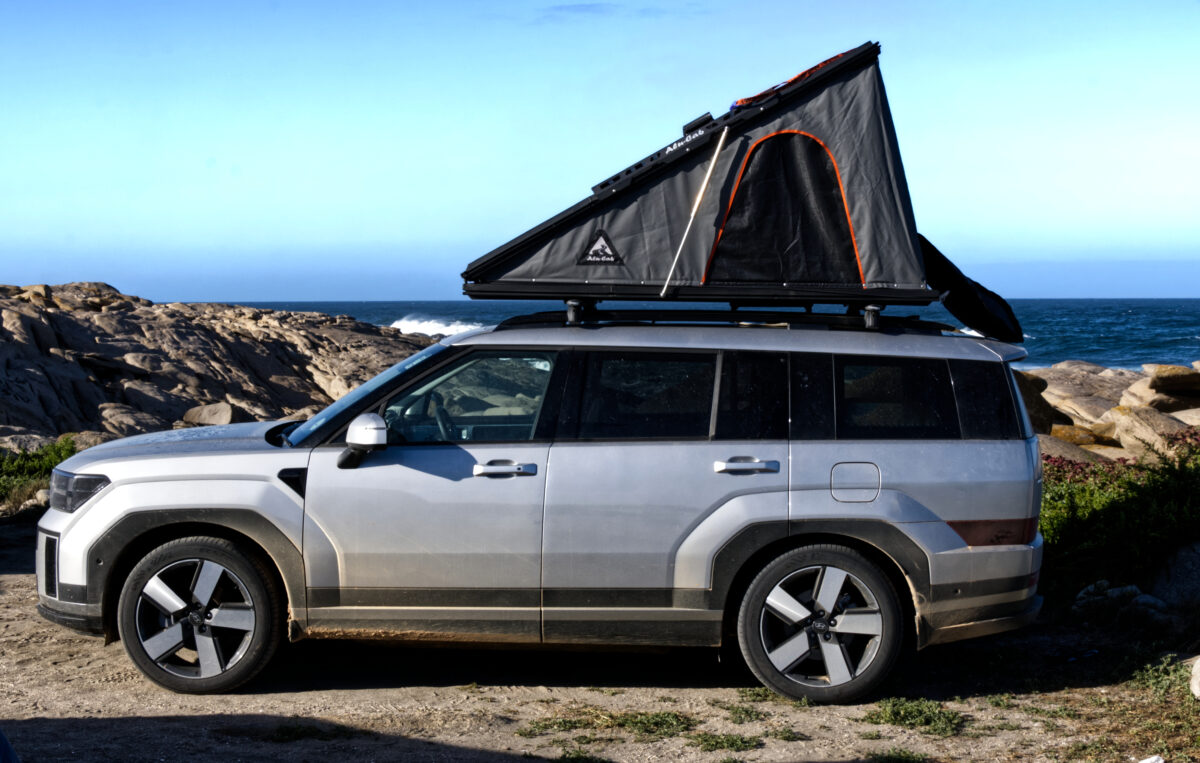
More Than a Pretty Face
The latest Santa Fe represents a significant departure from its predecessors, adopting what Hyundai’s head of global design, Sang Yup Lee, calls “a more family-car-focused tilt.” The vehicle’s striking, boxy bodywork isn’t merely aesthetic. It serves a practical purpose, maximizing interior space while accommodating a standard third row of seats .
Beneath the redesign lies what automotive journalists have described as “a blur between SUV and MPV,” with Hyundai deliberately emphasizing “space, comfort, and family-focused practicality” over all-road ability . The Santa Fe sits lower to the tarmac than previous generations (177 mm of ground clearance versus 206 mm), trading some rough-terrain capability for better on-road manners and a lower centre of gravity .
Under the hood, the Santa Fe Hybrid combines a 1.6-liter turbocharged petrol engine with an electric motor, producing combined outputs of 175 kW and 367 N.m of torque. This powertrain provides what Deon would describe as “perfectly functional” performance for a lifestyle vehicle, with the permanent all-wheel-drive system automatically shifting power between axles based on traction needs.
| Category | Specification |
|---|---|
| Powertrain | 1.6L turbo petrol + electric motor |
| Total Power | 175 kW |
| Total Torque | 367 N.m |
| Transmission | 6-speed automatic |
| Drivetrain | Permanent AWD with terrain modes |
| Cargo Space | 1,448 litres |
| Fuel Economy | 7.38 L/100 km (tested) |
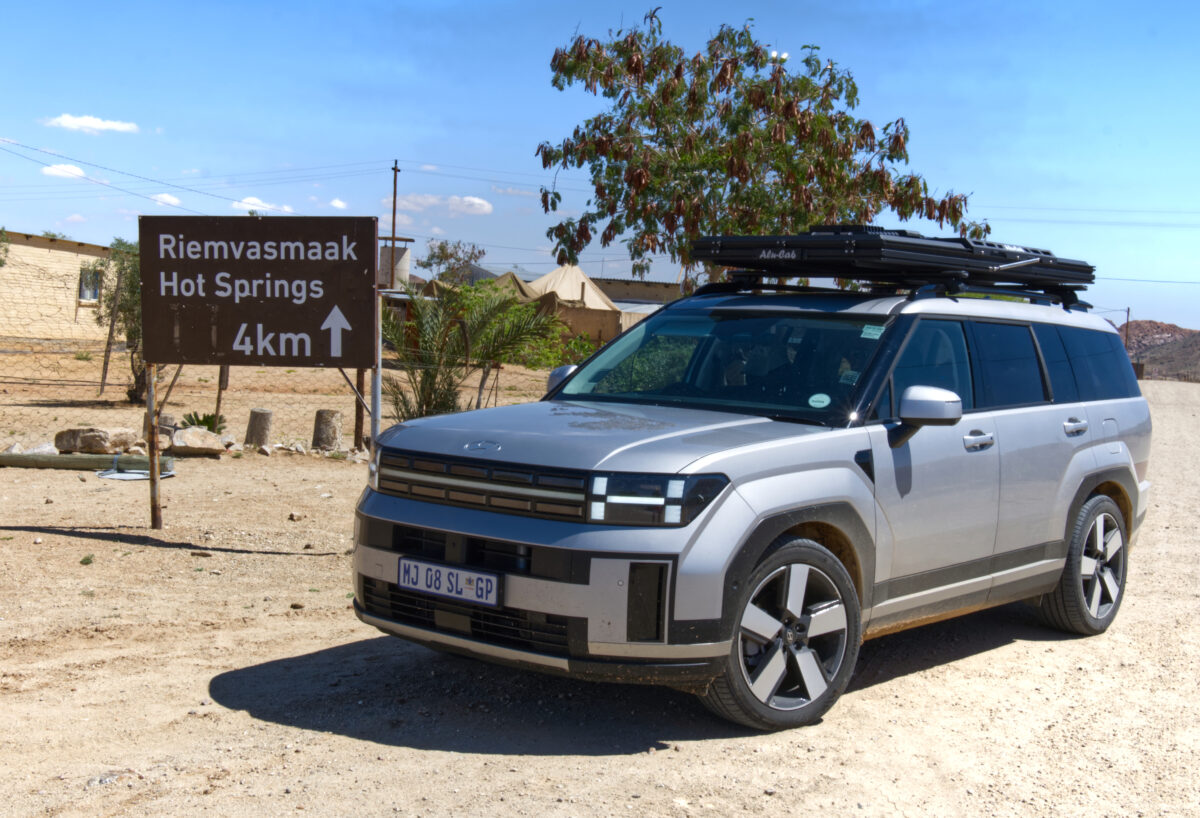
The Genesis of a West Coast Adventure
The vision for this journey emerged from Deon’s familiarity with South Africa’s often-overlooked western coastline. “The West Coast and a road trip to this region has a certain allure,” he notes. “It is unpretentious, sometimes barren, but with the Atlantic Ocean and the seafood that it brings, the rich plant life of Namaqualand and the Northern Cape – 16% of the world’s succulents can be found in this region – and the authenticity and honesty of this part of the country and its people is refreshing.”
This trip would represent something of a professional homecoming for Deon, applying his automotive knowledge without corporate constraints. “Experience teaches one the limitations and capabilities of different vehicles, which helps with the planning of such a trip,” he observes. Despite extensive planning, however, some elements remain beyond control: “Despite all the planning, one cannot control the weather, which did not treat us too kindly this time…”
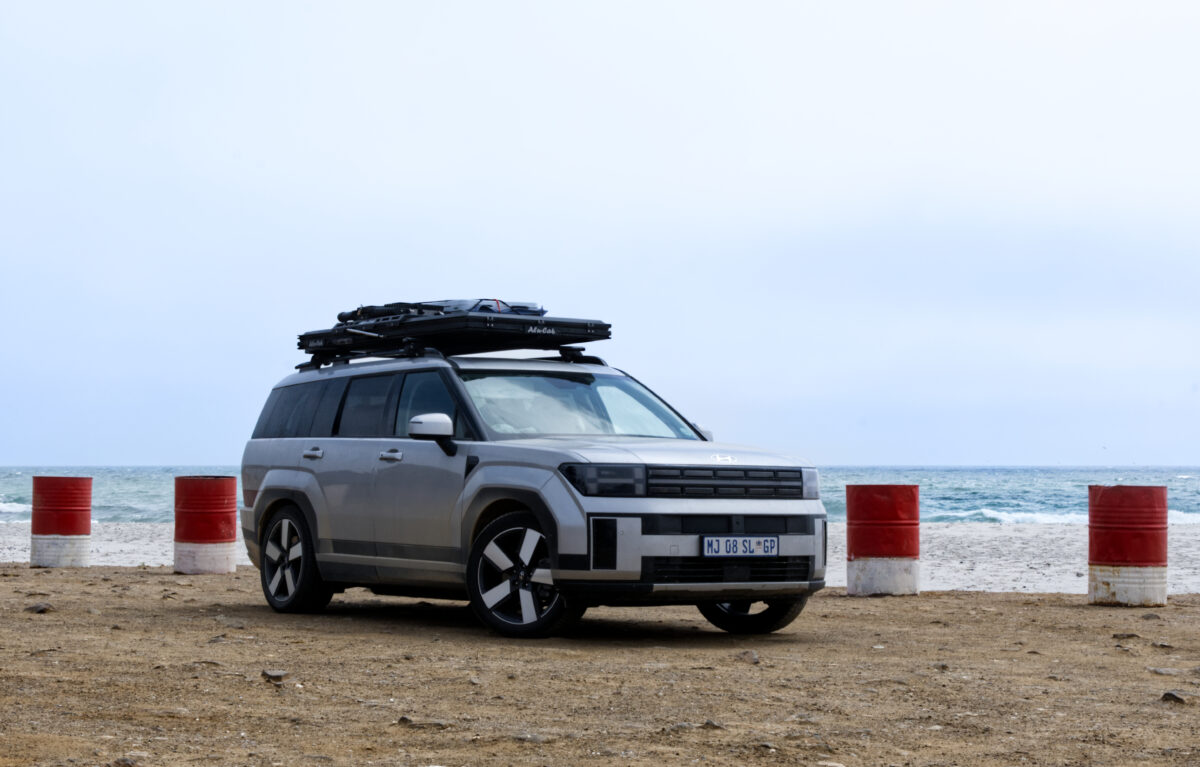
The Santa Fe as a Lifestyle Vehicle
Deon acknowledges that traditional overlanding enthusiasts might question the Santa Fe’s credentials. “Many people, especially hard-core 4×4 owners, may joke about and frown upon a setup of a Hyundai Santa Fe with a rooftop tent,” he says, “but that is exactly one aspect of this vehicle that Hyundai highlighted in its marketing of it.”
The key, he found, was understanding the vehicle’s parameters and working within them. “If you know how to drive on gravel and loose sand, or mud, and you keep the vehicle’s limitations in mind, it only gets dirty, not damaged.” He specifically notes the 20-inch wheels with “less rubber on them than a pucker ladder frame 4×4,” but counters that the “permanent All-Wheel Drive system of the Santa Fe, with a selection of terrain drive modes (Sand, Mud and Snow), moves power constantly between the rear and front wheels according the amount of traction that the wheels have.”
The right equipment proved crucial to the vehicle’s transformation into a capable touring platform. “One has to settle for a light rooftop tent on it, such as the Alu-Cab LT-50 Weekender which we used,” Deon explains, “but the combination of the rooftop tent, the roomy interior of the Santa Fe and its All-Wheel Drive capabilities makes it perfectly functional as a lifestyle vehicle.” He particularly appreciated that “the lighter tent does not raise the car’s centre of gravity too much,” maintaining the Santa Fe’s stable on-road manners.
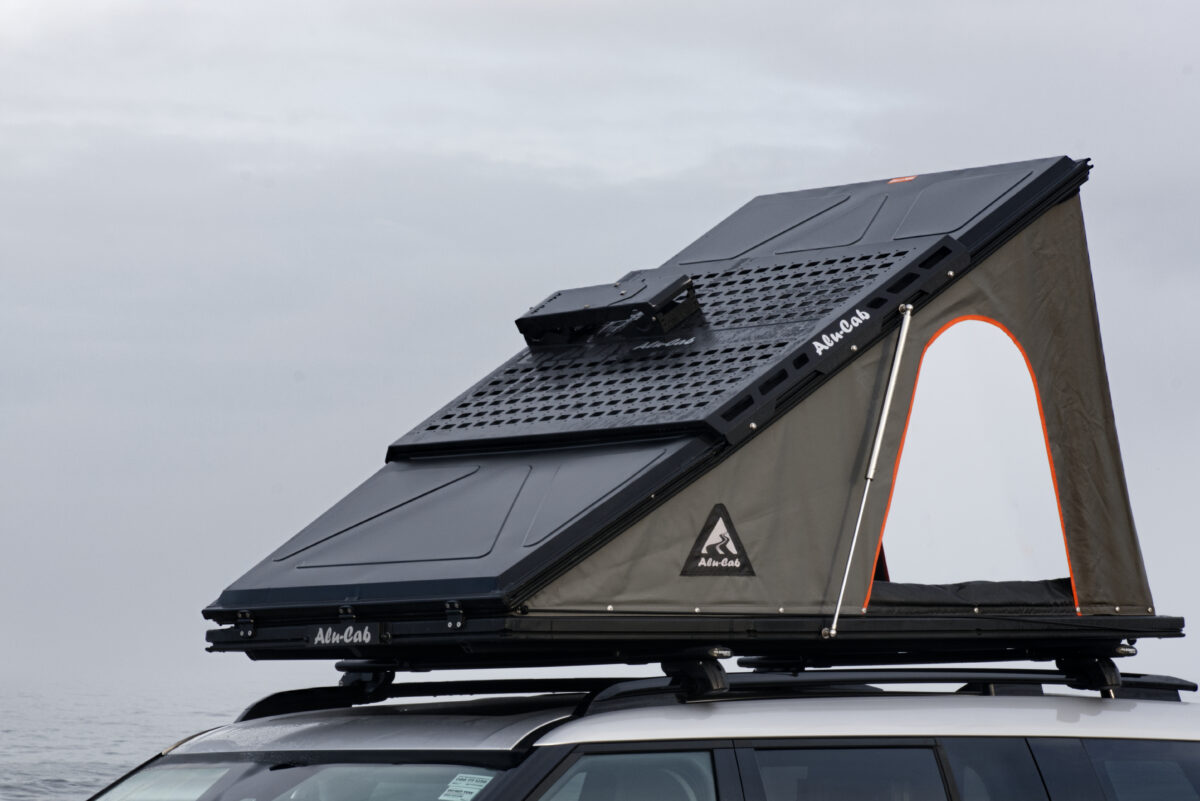
Purposeful Selection for Real-World Use
Deon’s equipment selection process was methodical, focusing on products that would enhance the experience without compromising the vehicle’s inherent strengths. “I did research and read some reviews before I decided to approach Alu-Cab,” he notes.
The Alu-Cab LT-50 Weekender rooftop tent earned particular praise: “The roof tent is made of a rugged material that can withstand a stiff wind and rain. It is easy to open and close, and the ladder can be carried in a storage bracket mounted on top of the LT-50 roof molle plate. The 6cm mattress is made of a high quality foam that ensures a good night’s rest. It is also one of the lightest rooftop tents around.”
For organization, Deon used four Alu-Cab ammo boxes for food and cooking utensils, which “fit well in the big cargo bay of the Santa Fe, with ample space left for luggage and other gear.” The Modular Duffle also proved its worth: “It organizes one’s clothing, toiletries and smaller gadgets very well in separate pouches of varying sizes. Interesting concept that prevents the hassle of digging around in an ordinary bag.”
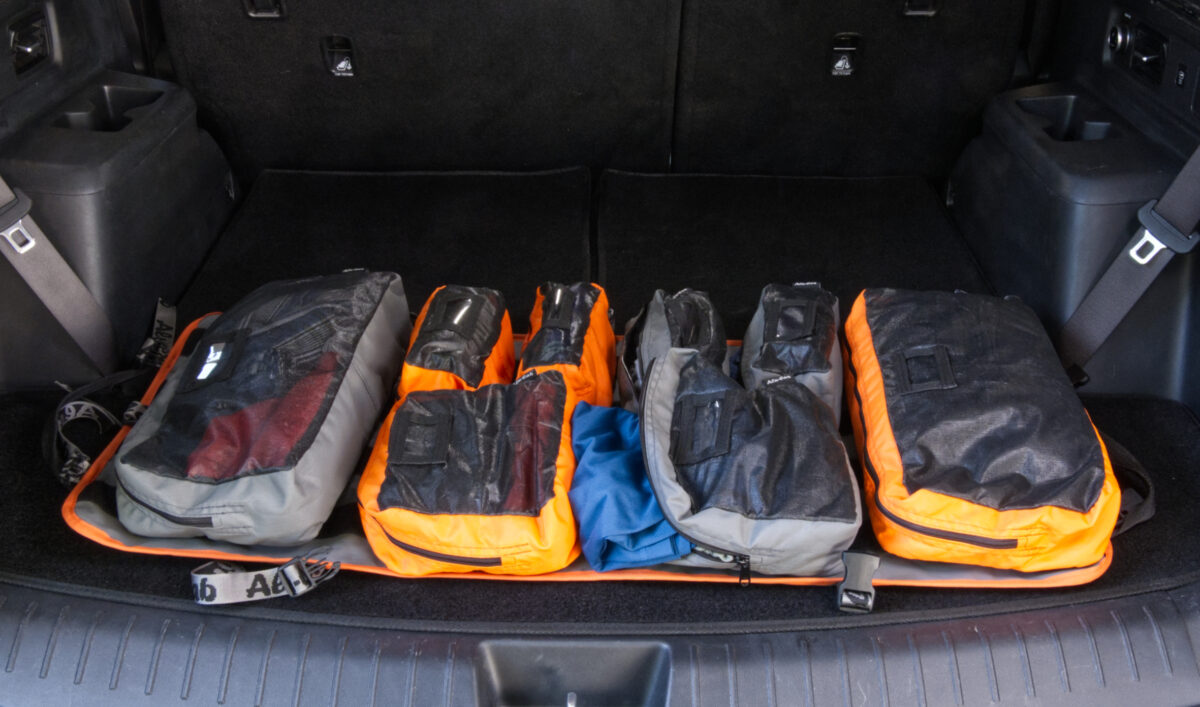
From Gauteng to the Atlantic and Back
The expedition followed a carefully considered route from Gauteng to the West Coast and back, with stops chosen to test the vehicle in varied conditions while showcasing the region’s diversity.
“The first stop was just a sleepover at an inn at Kathu in the Northern Cape, and then on to Augrabies Falls National Park, with its very neat camp site with electrical power, water, and clean, well-kept ablution facilities,” Deon recalls. “We spent two days here, and visited Riemvasmaak with its hot springs in the area.”
The journey then continued to Kleinzee on the Atlantic coastline, “staying in Die Houthoop’s Rustic Cabins outside town, after we had to cancel our stop at Hondeklipbaai due to Eskom-work on the power lines in the region.”
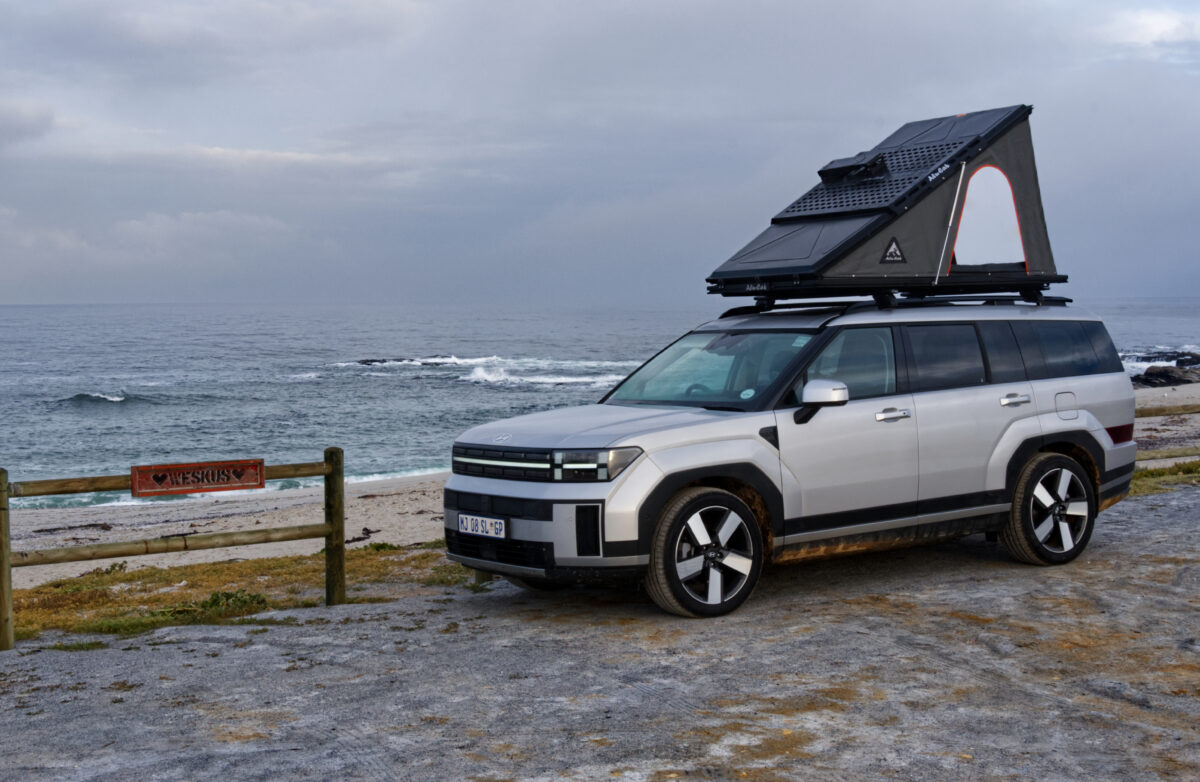
Gravel Travel
Perhaps the most demanding leg came next. The movement into Namaqua National Park over gravel roads to reach Koringkorrelbaai. “There are good guidance about which alternative routes are only suited for 4×4 vehicles with a high ground clearance and low-range gearboxes,” Deon notes. “We avoided those, mainly due to the low profile tyres of the Santa Fe which does not allow adequate deflation for soft sand driving. However, they performed fine on all the other gravel paths.”
Koringkorrelbaai itself represented the trip’s highlight “a hardened camper’s heaven: the only amenities are pit toilets and a mortar-and-stone boma as a wind shield for making fire and cooking. One has to take your own water for cooking and washing, own firewood and any other necessities like food and drinks.” Here, the Santa Fe and LT-50 RTT combination truly shone. “One can park the Santa Fe so that the rooftop-tent opens towards the sea, presenting a tranquil early morning view of the waves washing over the rocks when one wakes up.”
The expedition continued to Lamberts Bay, “staying at the Malkoppan caravan and camping site, 4 km outside the town. It is conveniently situated opposite the Muisbosskerm, an open-air seafood restaurant where we had a great time on the last night of our stay at the West Coast.”
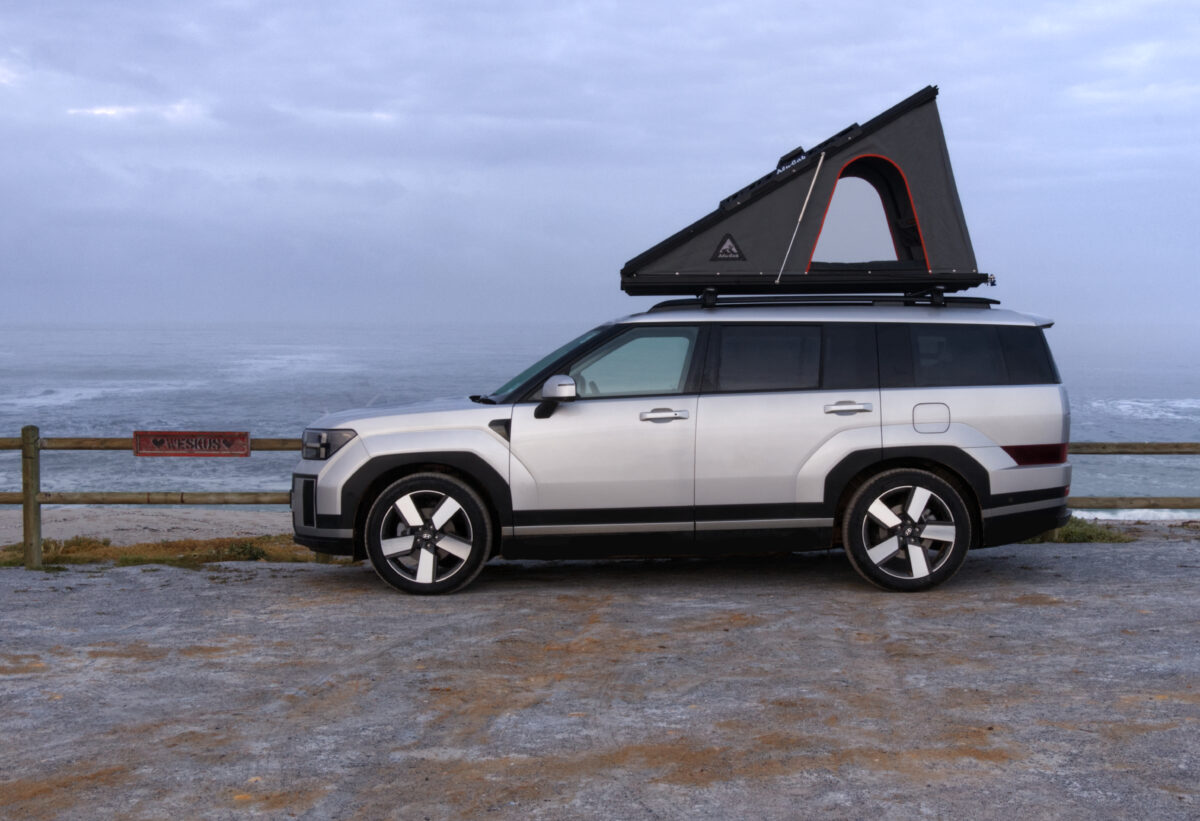
Lessons From the Road
Living with any setup reveals both strengths and areas for improvement, and Deon’s experience was no exception. “With the rooftop tent, it was keeping sand or mud out of the bed,” he notes. “An essential Alu-Cab accessory that I would include is the Shoe/Mud Bag which stores dirty gear outside the tent, but within easy reach.”
Weather management also proved crucial: “Removing the additional fly sheet from the rear tent opening before going to bed is also essential, especially on the West Coast where the weather was quite grotty, with a stiff wind blowing at times. I had to lean out of the tent in the middle of the night when the wind was making the fly sheet flutter noisily like a sail on a yacht.”
Despite these minor challenges, everything else worked as intended. “The rooftop tent makes sleeping under a duvet, instead of sleeping bags, easy and enjoyable. You can store your duvet and extra blanket in there too.” The organisational system also proved sound: “If the ammo boxes are labelled and organised properly, it is easy to lift out of the car’s boot to set up camp.”
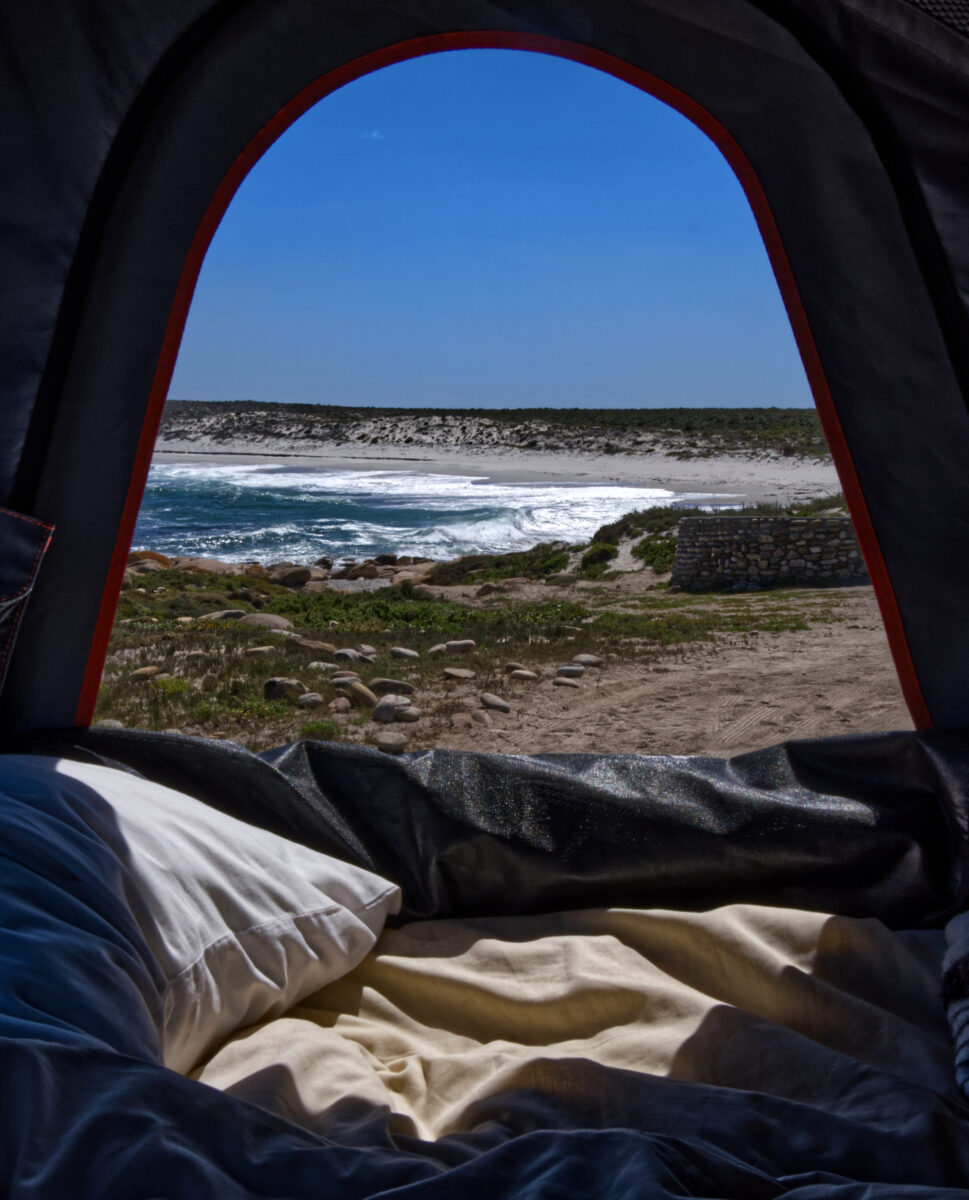
The Future of Automotive Marketing
With his background in automotive communications, Deon sees significant value in real-world testing of the sort he conducted. “To my mind, a campaign like this lends credibility to the manufacturer’s claim that its product is also a very capable leisure vehicle,” he observes. “If it endures a road trip like this without a scratch or any damage, it proves that the marketing talk is believable and can inform the reader more about the abilities of the vehicle.”
He sees this approach as particularly relevant for vehicles like the Santa Fe that occupy the space between conventional family haulers and dedicated off-roaders. “In this case, it also informs prospective customers how the addition of sensible accessories, such as the lightweight LT-50 Weekender roof tent, makes an SUV like the Hyundai Santa Fe even more versatile.”
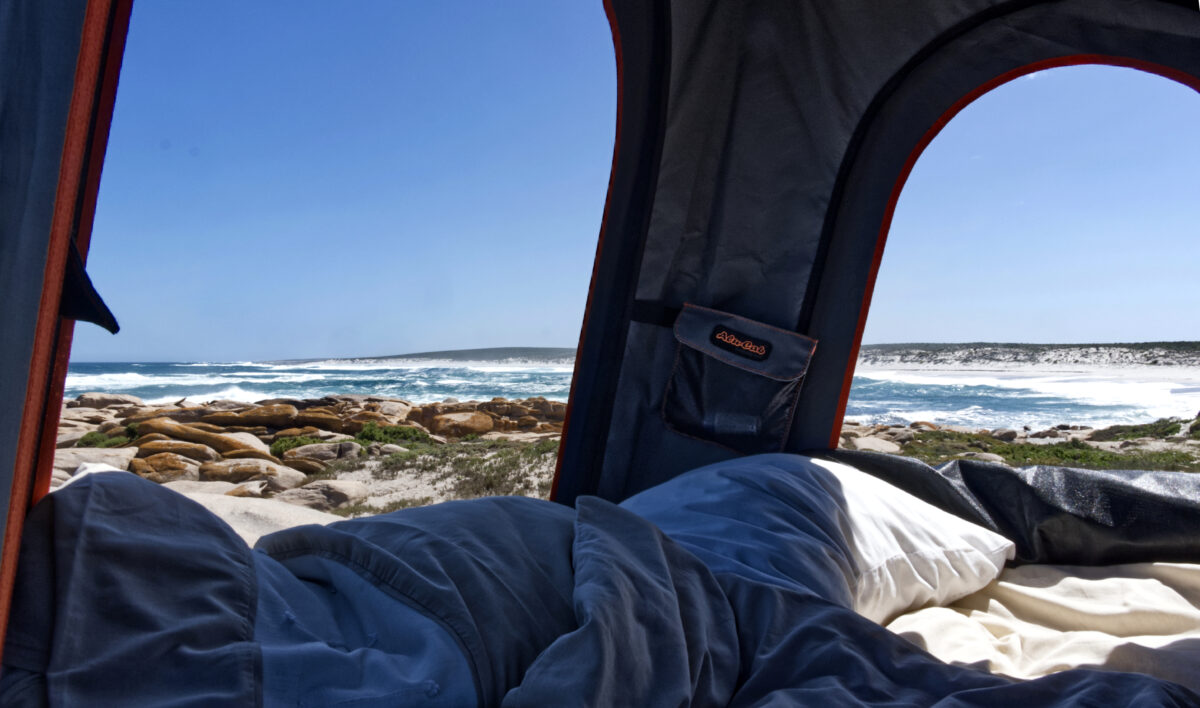
The Refined Setup
Having completed the journey, Deon has a clear vision of how he would refine the setup for future expeditions. “One does not want to overdress the Santa Fe as a hard-core 4×4 that is going to tour through Africa,” he cautions, “but there are accessories that would make such a trip even more enjoyable.”
Foremost among these is the Alu-Cab Shadow Awning. “that opens up and folds away so easily,” he says. “I would also include the Lightweight Roof Table Slide that is fixed to the underside of the roof tent and positioned between the tent and the car’s roof. And to keep things clean in the tent, the Shoe/Mud bag is essential.”
He also sees opportunities for optimizing packing: “We were 4 people up in the Santa Fe, but if the rear seats are open, one can put the duffel bags with clothing there and add another ammo box to keep things neat and tidy in the car. An ammo box to store on the LT-50 Roof Molle on top of the rooftop tent will also be handy.”
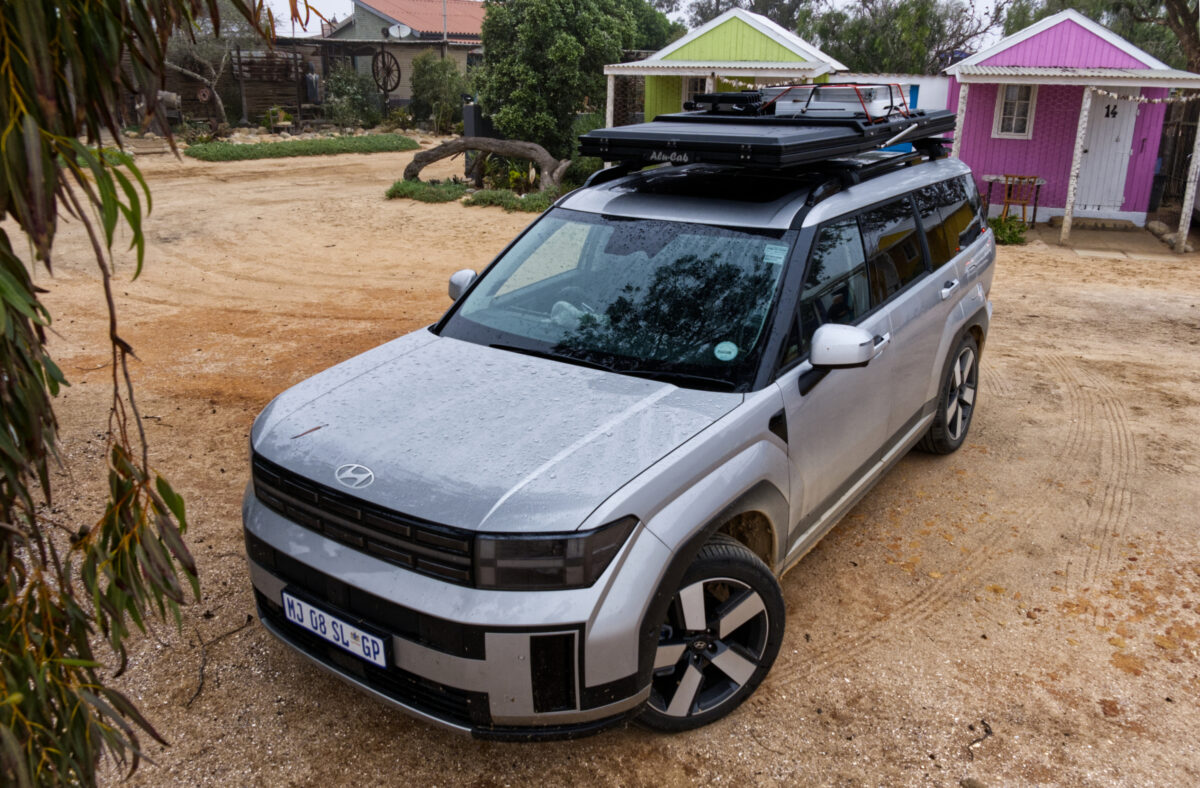
A Lifestyle Redefined
For Deon, this journey reinforced the appeal of a particular approach to overlanding. One that prioritizes adaptability and practicality over specialised capability. “Car camping in the way we did it makes use of the versatility that an SUV offers,” he reflects. “One can always remove gear when you get home, and then your vehicle is a perfectly fine everyday car for city driving. One does not need to spend a lot of extra money on a caravan or a dedicated, fitted camper van which does not offer the versatility of an everyday car.”
This perspective informs his advice for aspiring adventurers: “Choose the region you would like to explore, think about the capabilities of your vehicle and how suitable it is for the roads that would take you there.” He speaks from personal experience: “My own vehicle is a Hyundai Grand Creta, which has front-wheel drive only, but with a decent ground clearance. Applying common sense, I have covered some very rough roads off the beaten track with it without causing any damage to the car.”
His final recommendation underscores the practicality that defined the entire journey: “I also use a securely lockable roof box on my Grand Creta, which swallows a lot of lighter camping gear and other ‘stuff’. It frees one from the hassle of towing a trailer or packing the car to the roof inside with barely space to breathe.”
In the end, the success of the expedition came down to a simple formula: “All it needs is common sense, a reasonable budget, and the right mindset.”
Read Deon Sonnekus’ write up in Road Trip Magazine by clicking this link.
